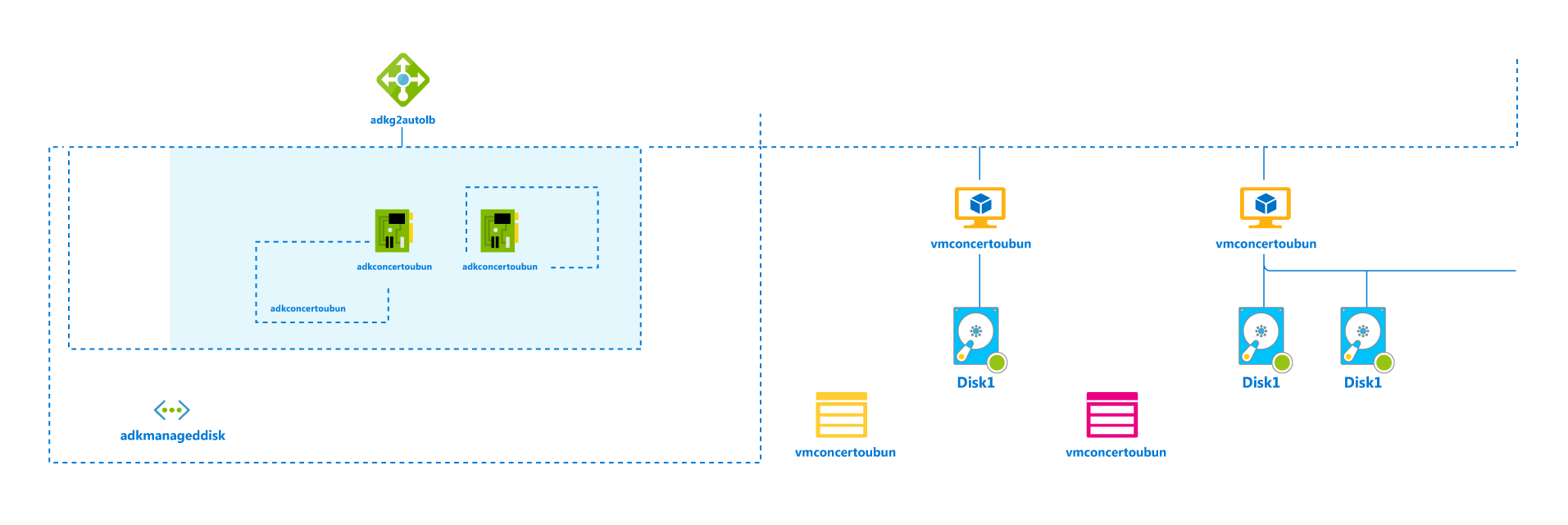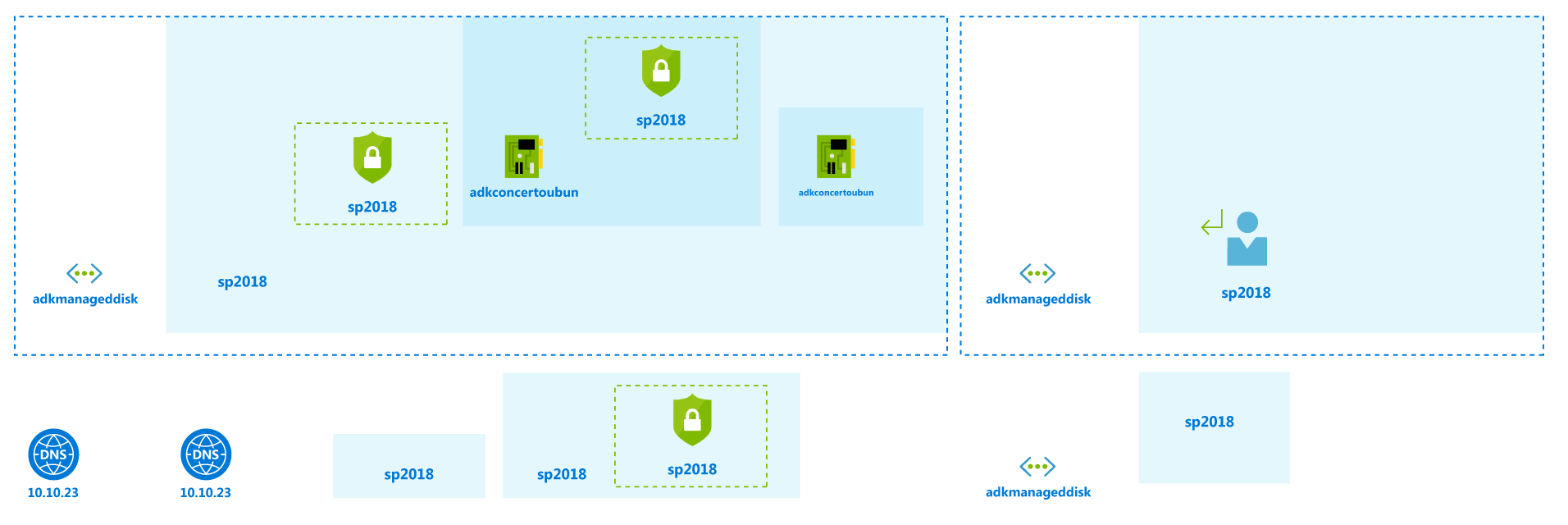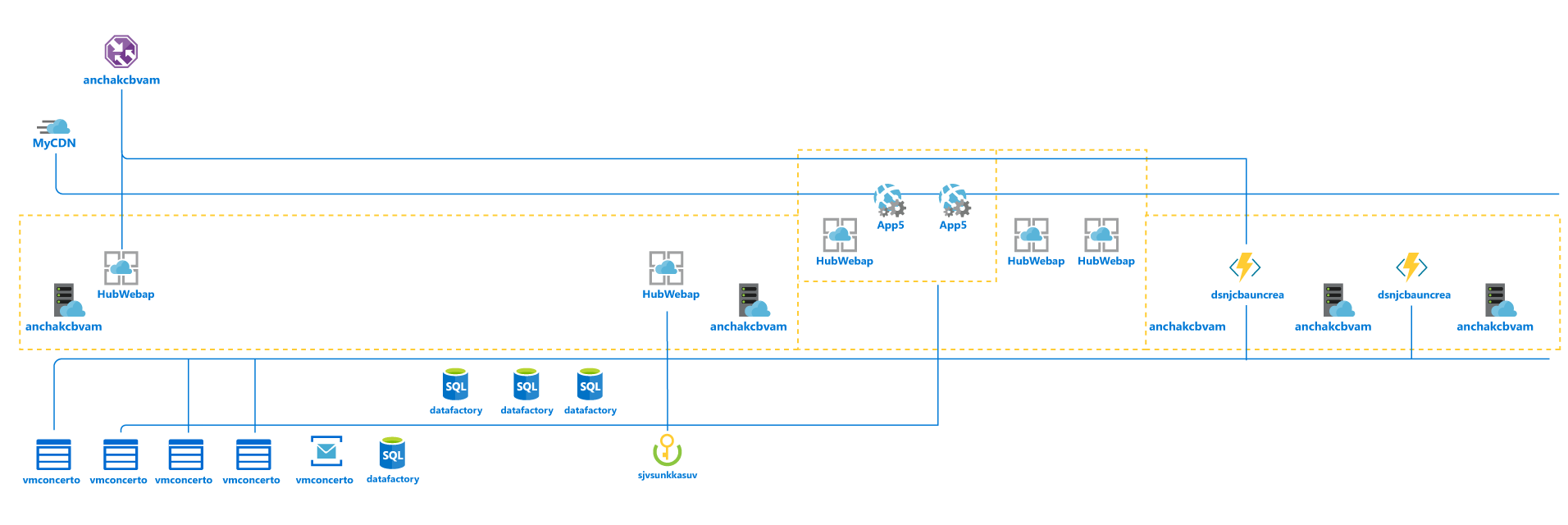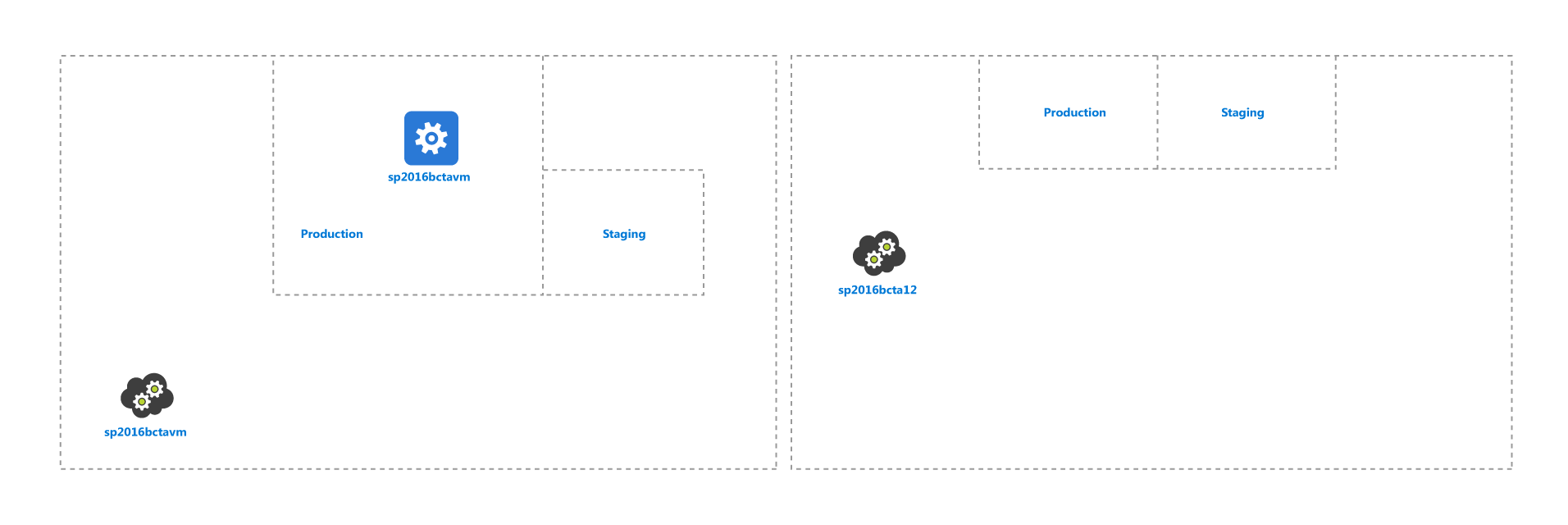The 30 Most Used Microsoft Azure Icons Explained!
Whether you are new to the world of Azure architecture diagrams or an expert, this article will help you navigate the wide range of cloud architecture components Microsoft Azure has to offer. Unfortunately, before this article, there wasn’t a one stop shop to explain what each icon represents. Look no further, Cloudockit, one of the leading experts in cloud diagramming, has you covered.
Please note that the information for the article was taken from various online sources. A full list of sources is available after the article if you wish to continue your research.
Virtual Machines

Azure Virtual Machine icon
Virtual Machine
Azure Virtual Machines are image service instances that provide on-demand and scalable computing resources. In general, virtual machines are sandboxed from the rest of the system, the software inside a virtual machine can’t escape or tamper with the underlying server itself.

Azure Load Balancer icon
Azure Load Balancer
An Azure load balancer is a Layer-4 (TCP, UDP) load balancer that provides high availability by distributing incoming traffic among healthy VMs. A load balancer health probe monitors a given port on each VM and only distributes traffic to an operational VM.

Azure Network Interface Card icon
Network Interface Card
A network interface enables an Azure Virtual Machine to communicate with internet, Azure, and on-premises resources. When creating a virtual machine using the Azure portal, the portal creates one network interface with default settings for you.

Azure VHD icon
VHD Data Disk – VHD
Just like any other computer, virtual machines in Azure use disks as a place to store an operating system, applications, and data. All Azure virtual machines have at least two disks – an operating system disk and a temporary disk. The operating system disk is created from an image, and both the operating system disk and the image are actually virtual hard disks (VHDs) stored in an Azure storage account. Virtual machines also can have one or more data disks, that are also stored as VHDs.

Azure Storage Accounts icon
Storage Accounts
An Azure storage account contains all of your Azure Storage data objects: blobs, files, queues, tables, and disks. The storage account provides a unique namespace for your Azure Storage data that is accessible from anywhere in the world over HTTP or HTTPS.

Networks

Azure Virtual Network icon
Virtual Network
An Azure Virtual Network (VNet) is a representation of your own network in the cloud. It is a logical isolation of the Azure cloud dedicated to your subscription. When you create a VNet, your services and VMs within your VNet can communicate directly and securely with each other in the cloud.

Azure Security Center icon
Security Center
Azure Security Center is a unified infrastructure security management system that strengthens the security posture of your data centers, and provides advanced threat protection across your hybrid workloads in the cloud.

Azure Service Endpoint icon
Service Endpoint
Virtual Network (VNet) service endpoints extend your virtual network private address space. The endpoints also extend the identity of your VNet to the Azure services over a direct connection. Endpoints allow you to secure your critical Azure service resources to only your virtual networks

Azure DNS icon
DNS
Azure DNS (domain name system) is a hosting service for DNS domains that provides name resolution by using Microsoft Azure infrastructure. By hosting your domains in Azure, you can manage your DNS records by using the same credentials, APIs, tools, and billing as your other Azure services.

App Services

Azure App Service icon
App Service
Azure App Service is an HTTP-based service for hosting web applications, REST APIs, and mobile back ends. You can develop in your favorite language, be it .NET, .NET Core, Java, Ruby, Node.js, PHP, or Python.

Azure App Service Plan icon
App Service Plan
An App Service Plan consists of the underlying virtual machines that will host the Azure App Services. The App Service Plan defines the region of the physical server where your app will be hosted on and the amount of storage, RAM, and CPU the physical servers will have.

Azure Traffic Manager icon
Traffic Manager
Azure Traffic Manager is a DNS-based traffic load balancer that enables you to distribute traffic optimally to services across global Azure regions, while providing high availability and responsiveness.

Azure SQL icon
Azure SQL Database
Microsoft Azure SQL Database is a managed cloud database (PaaS) provided as part of Microsoft Azure.
A cloud database is a database that runs on a cloud computing platform, and access to it is provided as a service. Managed database services take care of scalability, backup, and high availability of the database.


Azure Mobile App Service icon
Mobile App Service
The Mobile Apps feature of Azure App Service gives enterprise developers and system integrators a mobile-application development platform that’s highly scalable and globally available.

Azure WebJob icon
WebJob
WebJobs is a feature of Azure App Service that enables you to run a program or script in the same context as a web app, API app, or mobile app.

Azure Key Vault icon
Azure Key Vault
Microsoft Azure Key Vault is a cloud-hosted management service that allows users to encrypt keys and small secrets by using keys that are protected by hardware security modules (HSMs).

Azure Function icon
Function
Azure Functions is a serverless compute service that lets you run event-triggered code without having to explicitly provision or manage infrastructure.
Looking for Cloud Visio Stencils to Built Your Diagrams?
Cloud Services

Azure Web Role icon
Cloud Service Web Role
Web Role is a Cloud Service role in Azure that is configured and customized to run web applications developed on programming languages/technologies that are supported by Internet Information Services (IIS), such as ASP.NET, PHP, Windows Communication Foundation and Fast CGI.

Azure Cloud Services icon
Cloud Services
There are two types of Azure Cloud Services roles; Web role: Automatically deploys and hosts your app through IIS. Worker role: Does not use IIS, and runs your app standalone.


Azure Cloud Service Worker Role icon
Cloud Service Worker Role
Worker Role is any role in Azure that runs applications and services level tasks, which generally do not require IIS. In Worker Roles, IIS is not installed by default.
Management Groups

Azure Management Groups icon
Management Groups
Management groups are containers that help you manage access, policy, and compliance across multiple subscriptions. Create these containers to build an effective and efficient hierarchy that can be used with Azure Policy and Azure Role Based Access Controls.
Kubernetes

Azure Kubernetes icon
Kubernetes
Kubernetes (pronounced “koo-ber-net-ees”) is open-source software for deploying and managing containers at scale.

Azure Kubernetes Pod icon
Kubernetes Pod
A Kubernetes pod is a group of containers that are deployed together on the same host. If you frequently deploy single containers, you can generally replace the word “pod” with “container” and accurately understand the concept.

Azure Kubernetes Services icon
Kubernetes Services
Azure Kubernetes Service is a managed container orchestration service, based on the open source Kubernetes system. An organization can use AKS to deploy, scale and manage Docker containers and container-based applications across a cluster of container hosts.
Other Azure Cloud Components

Azure Service Bus icon
Azure Service Bus
Microsoft Azure Service Bus is a fully managed enterprise integration message broker. Service Bus can decouple applications and services. It offers a reliable and secure platform for asynchronous transfer of data and state.

Azure Logic App Icon icon
Azure Logic App
Azure Logic Apps is a cloud service that helps you schedule, automate, and orchestrate tasks, business processes, and workflows when you need to integrate apps, data, systems, and services across enterprises or organizations.

Azure Resource Group icon
Resource Group
Resource groups (RG) in Azure is a new approach to group a collection of assets in logical groups for easy or even automatic provisioning, monitoring, and access control, and for more effective management of their costs.

Azure CDN icon
Content Delivery Network (CDN)
A content delivery network (CDN) is a distributed network of servers that can efficiently deliver web content to users. Azure CDN can also accelerate dynamic content, which cannot be cached, by leveraging various network optimizations using CDN POPs.

Azure Event Hubs icon
Azure Event Hubs
Azure Event Hubs is a big data streaming platform and event ingestion service. It can receive and process millions of events per second. Data sent to an event hub can be transformed and stored by using any real-time analytics provider or batching/storage adapters.

Azure Public IP icon
Public IP
Public IP addresses allow Internet resources to communicate inbound to Azure resources. Public IP addresses also enable Azure resources to communicate outbound to Internet and public-facing Azure services with an IP address assigned to the resource.

Azure Stream Analytics icon
Stream Analytics
An Azure Stream Analytics job consists of an input, query, and an output. Stream Analytics ingests data from Azure Event Hubs, Azure IoT Hub, or Azure Blob Storage. The query, which is based on SQL query language, can be used to easily filter, sort, aggregate, and join streaming data over a period of time.

Azure IoT Hub icon
IoT Hub
Azure IoT hub is a managed IoT service which is hosted in the cloud. It allows bi-directional communication between IoT applications and the devices it manages. This cloud-to-device connectivity means that you can receive data from your devices, but you can also send commands and policies back to the devices.
How Do Your Azure Icons Interact With Each Other in Your Architecture Diagrams
Cloudockit’s Azure architecture diagram tool is the simplest way of diagramming your cloud components. The diagrams can are fully editable and can be read with Visio, Draw.io and Lucidchart. The software creates diagrams organized in so many ways that you will find the one that just fits your needs such as resource groups, business application, workload types and global diagrams.
The main idea is to never create your own diagrams, the time spent creating them could be used to more useful tasks.
Sources
App Service: https://docs.microsoft.com/en-us/azure/app-service/overview
App Service Plan: https://thebackroomtech.com/2018/08/29/understanding-app-service-plans-in-azure/
Azure Event Hubs: https://docs.microsoft.com/en-us/azure/event-hubs/event-hubs-about
Azure Load Balancer: https://docs.microsoft.com/en-us/azure/virtual-machines/windows/tutorial-load-balancer
Azure Key Vault: https://searchwindowsserver.techtarget.com/definition/Microsoft-Azure-Key-Vault
Azure Logic App: https://docs.microsoft.com/en-us/azure/logic-apps/logic-apps-overview
Azure Service Bus: https://docs.microsoft.com/en-us/azure/service-bus-messaging/service-bus-messaging-overview
Azure SQL Database: https://en.wikipedia.org/wiki/Microsoft_Azure_SQL_Database
Cloud Services: https://docs.microsoft.com/en-us/azure/cloud-services/cloud-services-choose-me
Cloud Service Web Role: https://cloudmonix.com/blog/what-is-web-and-worker-role-in-microsoft-azure/
Cloud Service Worker Role: https://cloudmonix.com/blog/what-is-web-and-worker-role-in-microsoft-azure/
Content Delivery Network (CDN): https://docs.microsoft.com/en-us/azure/cdn/cdn-overview
DNS: https://docs.microsoft.com/en-us/azure/dns/dns-overview
Function: https://docs.microsoft.com/en-us/azure/azure-functions/
IoT Hub: https://www.c-sharpcorner.com/article/what-is-azure-iot-hub/
Kubernetes: https://azure.microsoft.com/en-ca/topic/what-is-kubernetes/
Kubernetes Pod: https://coreos.com/kubernetes/docs/latest/pods.html
Kubernetes Services: https://searchcloudcomputing.techtarget.com/definition/Azure-Kubernetes-Service-AKS